Abstract
The effects of d-amphetamine sulfate, sodium pentobarbital, haloperidol, and cholecystokinin-octapeptide were examined within the context of Nevin's (1974, 1979) resistance-to-change hypothesis of response strength. In three experiments, rats' responding was reinforced by delivery of food under chained random-interval 30-s random-interval 30-s, multiple fixed-interval 30-s fixed-interval 120-s, or multiple random-interval 30-s random-interval 120-s schedules. Each rat received several doses of each drug and changes in response rate were measured. The resistance-to-change hypothesis predicts greater disruption of response rate relative to baseline in the initial component of the chained schedule and in the 120-s component of the multiple schedules. In the chained schedule cholecystokinin-octapeptide produced greater reductions in response rate relative to baseline in the initial component. However, no differences between components were observed with haloperidol or sodium pentobarbital, and high doses of d-amphetamine reduced response rate in the terminal component relatively more than in the initial component. In the multiple schedules either no differences were observed between components or response rate was reduced more relative to baseline in the 30-s component. The data fail to support the notion that drugs may be viewed within the same context as other response disruptors such as extinction, satiation, and the presentation of alternative reinforcement.
Full text
PDF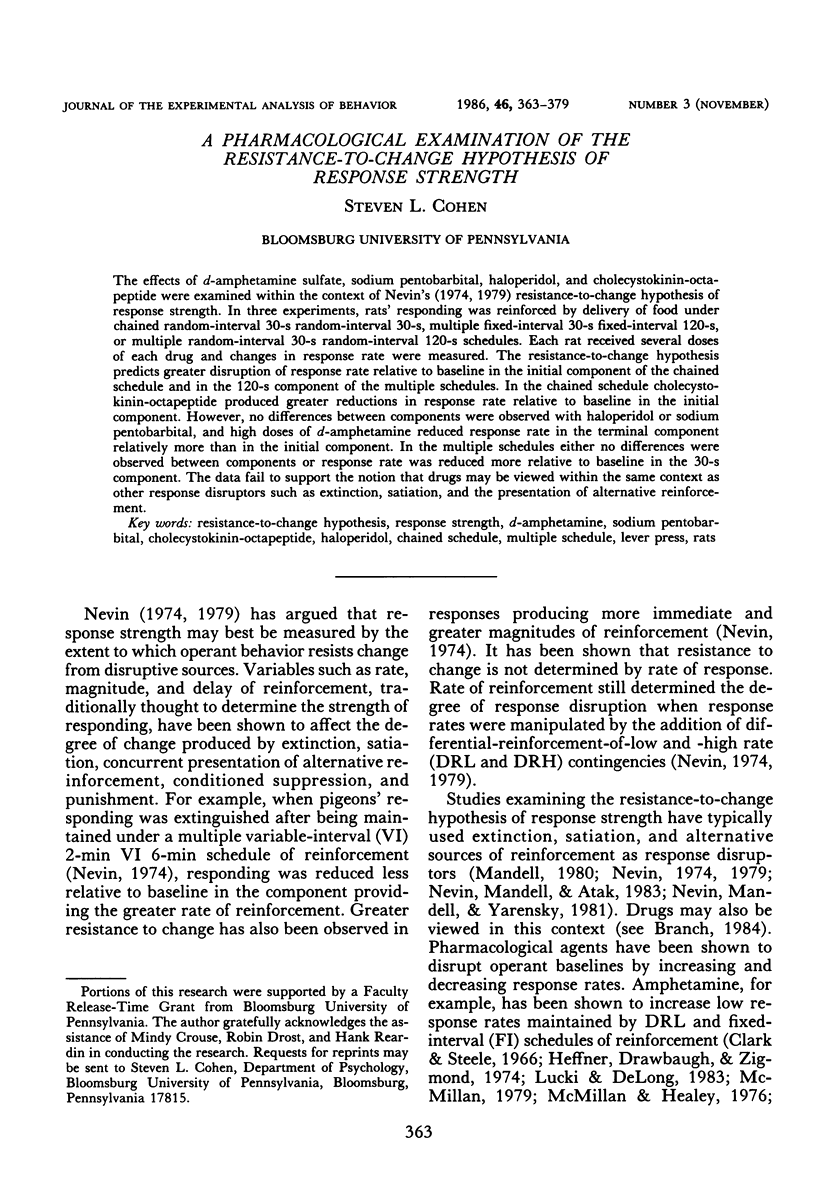
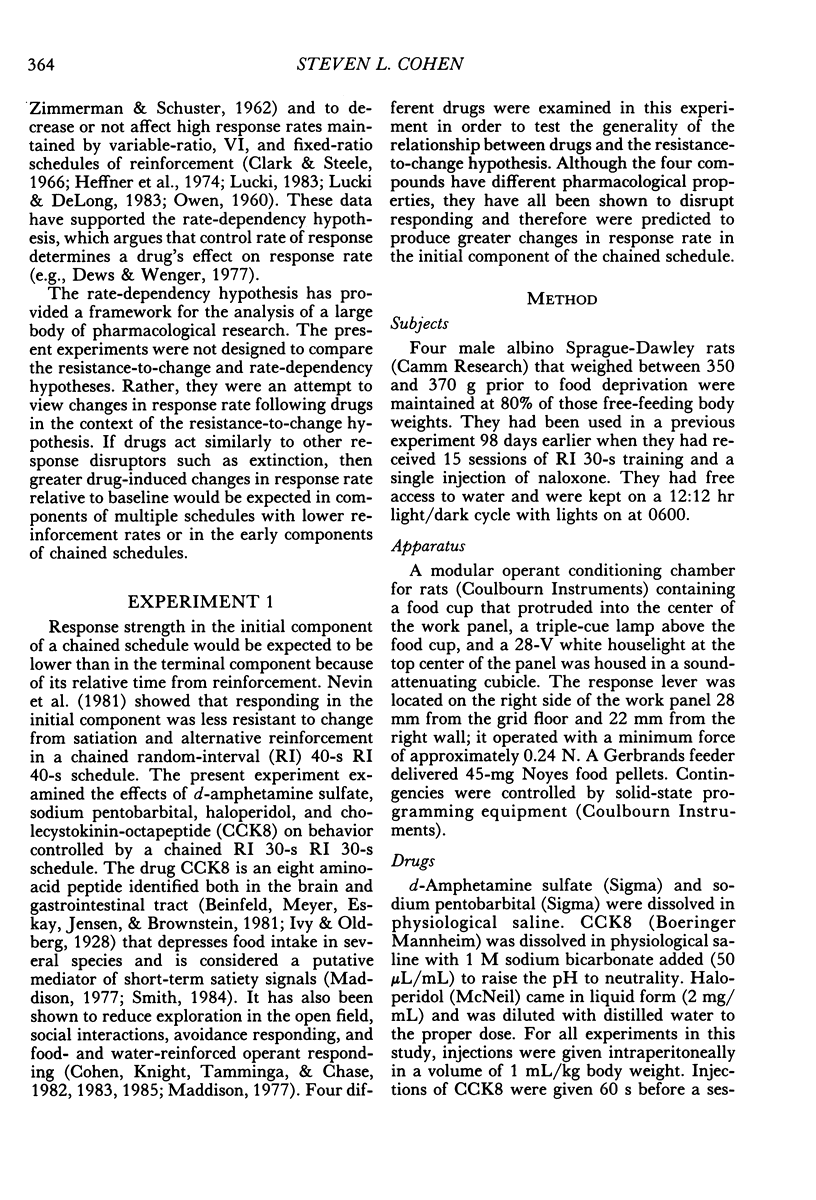
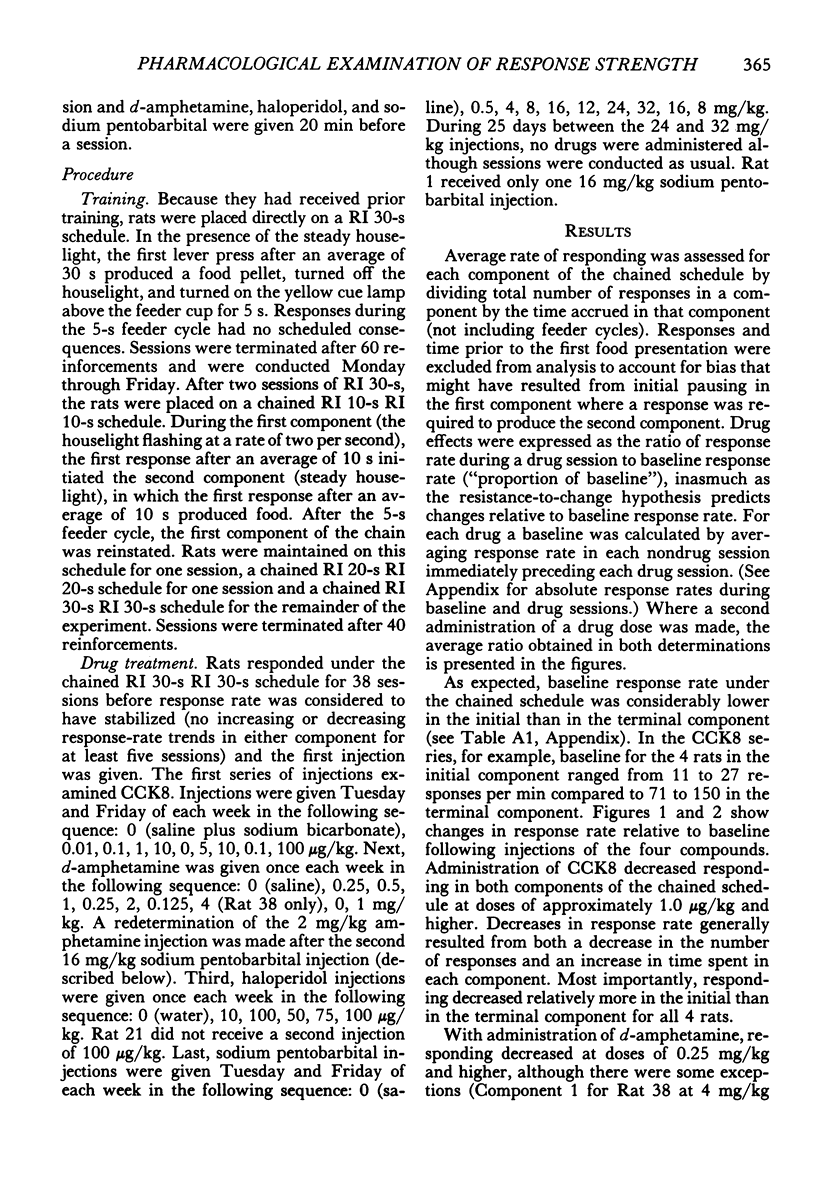
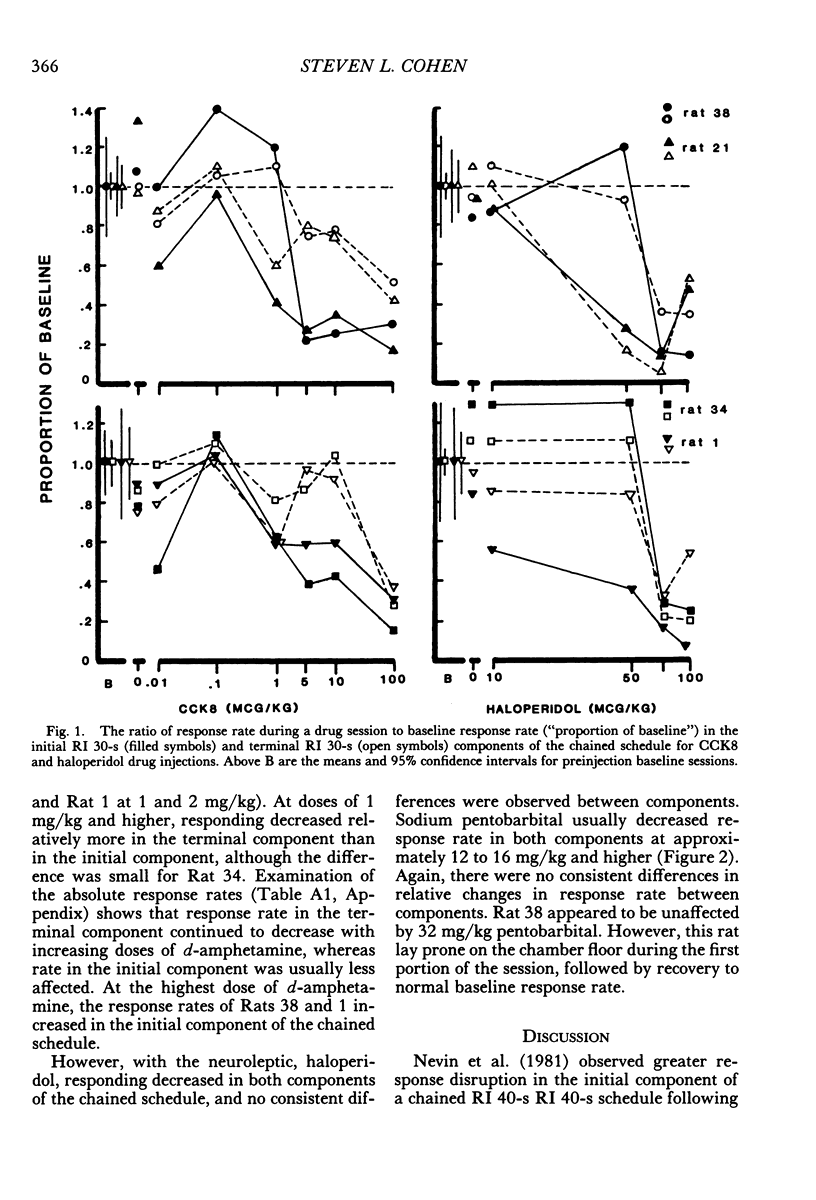
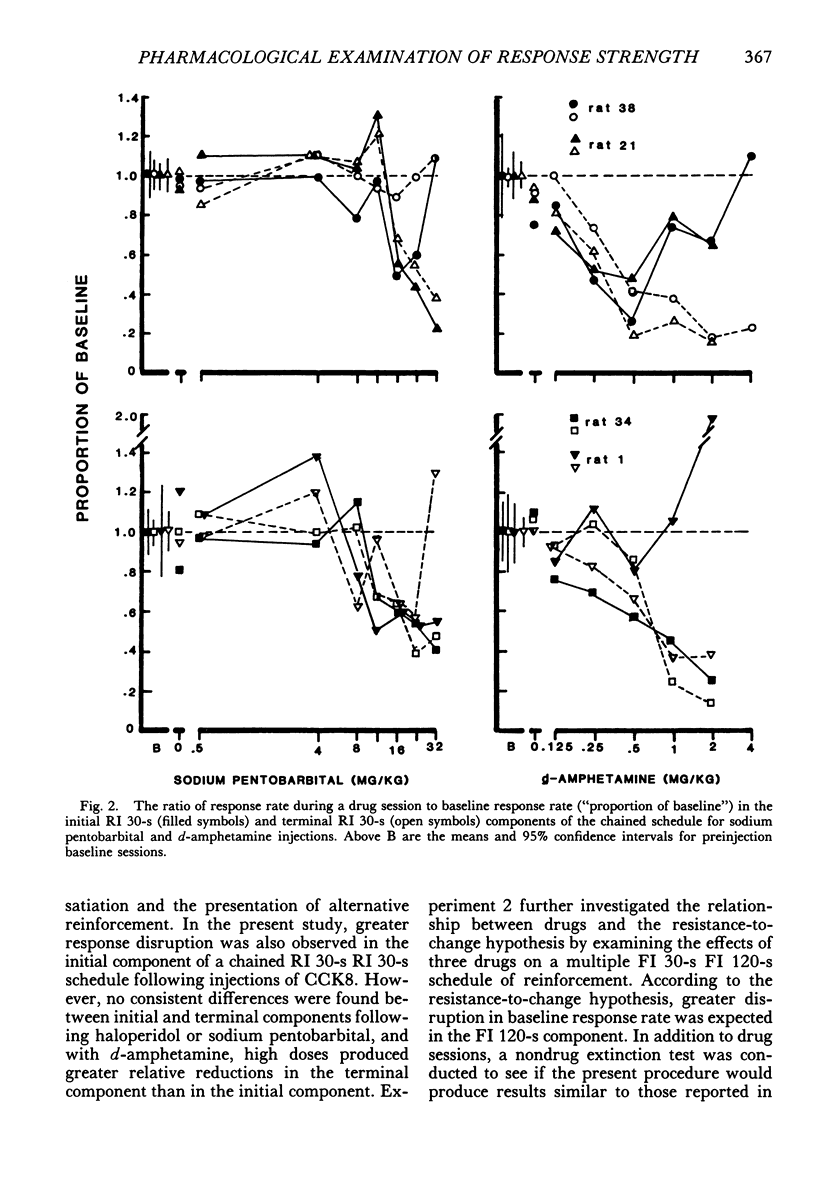
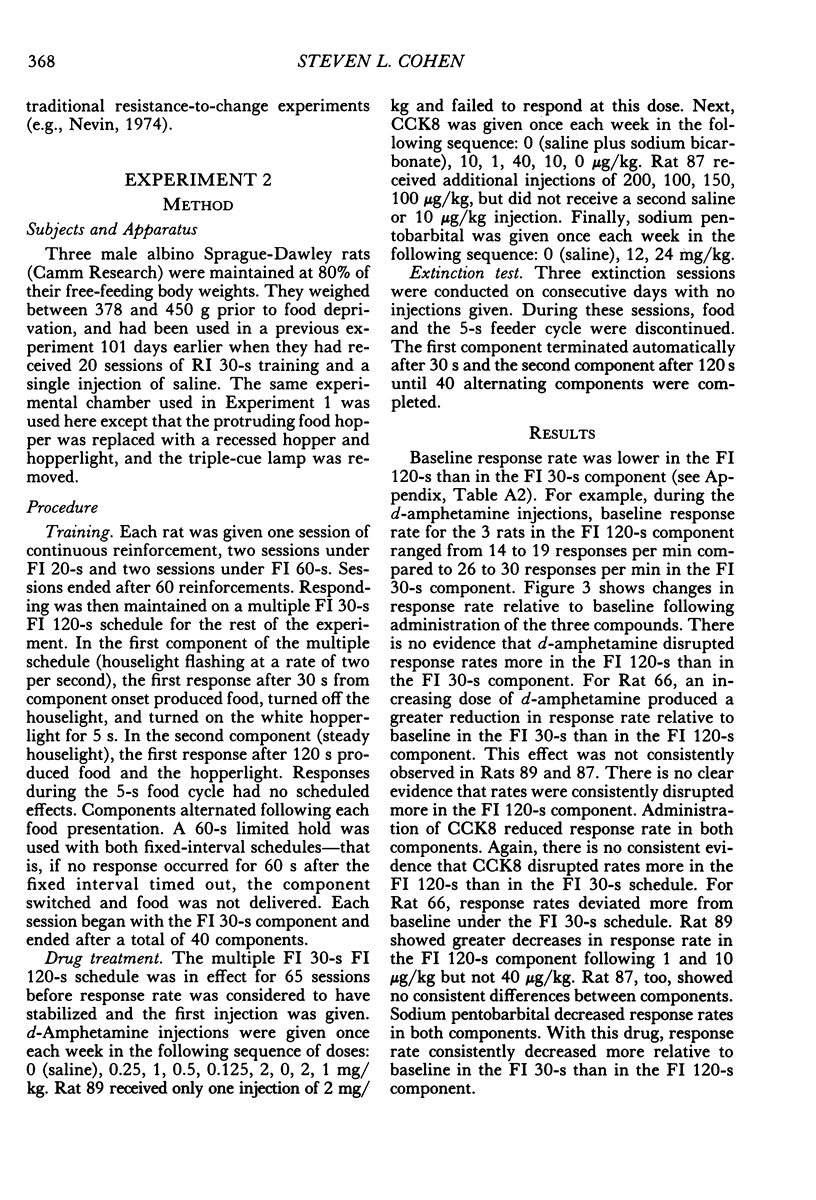
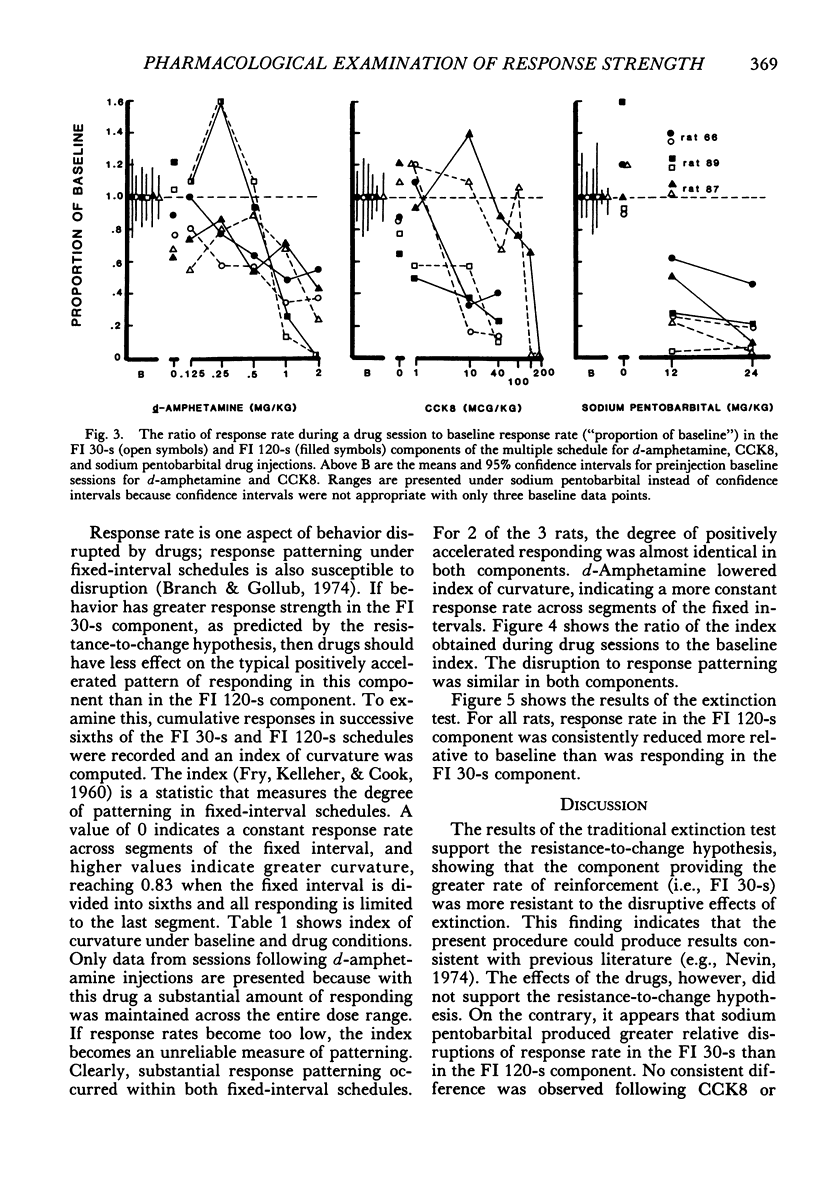
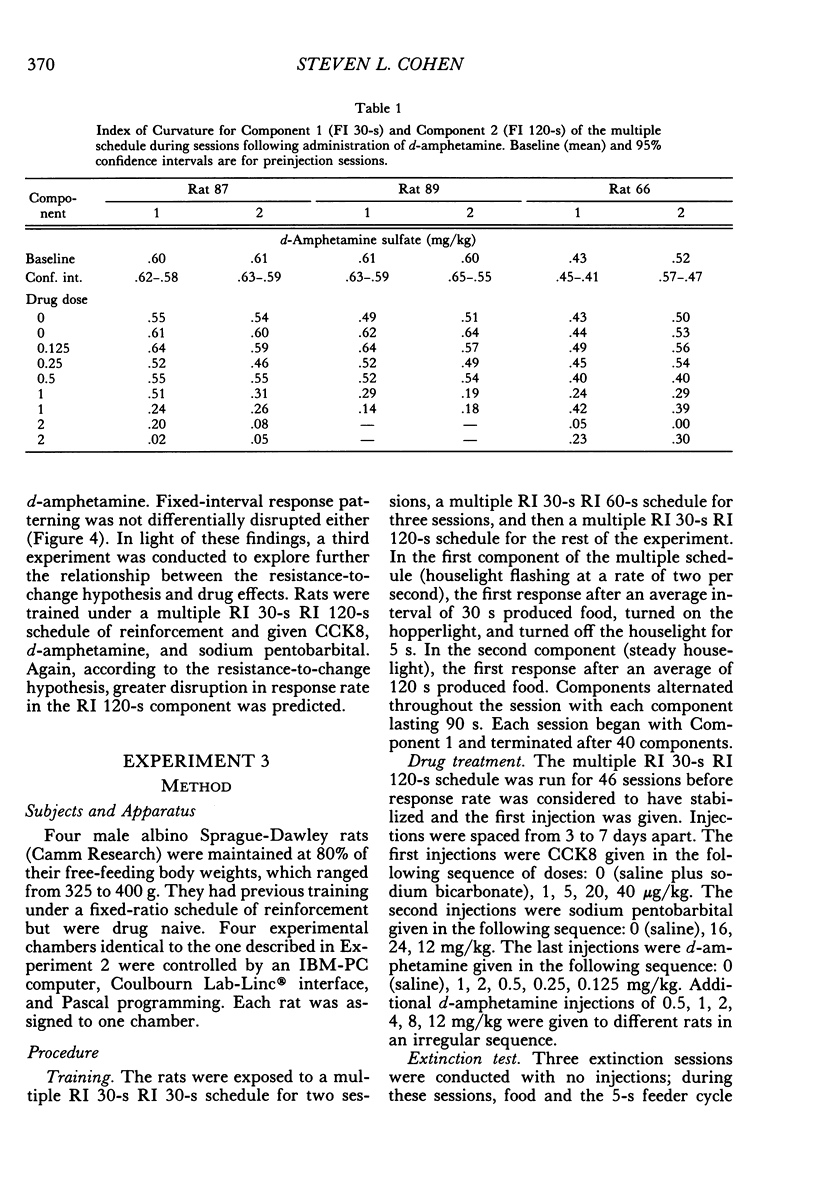
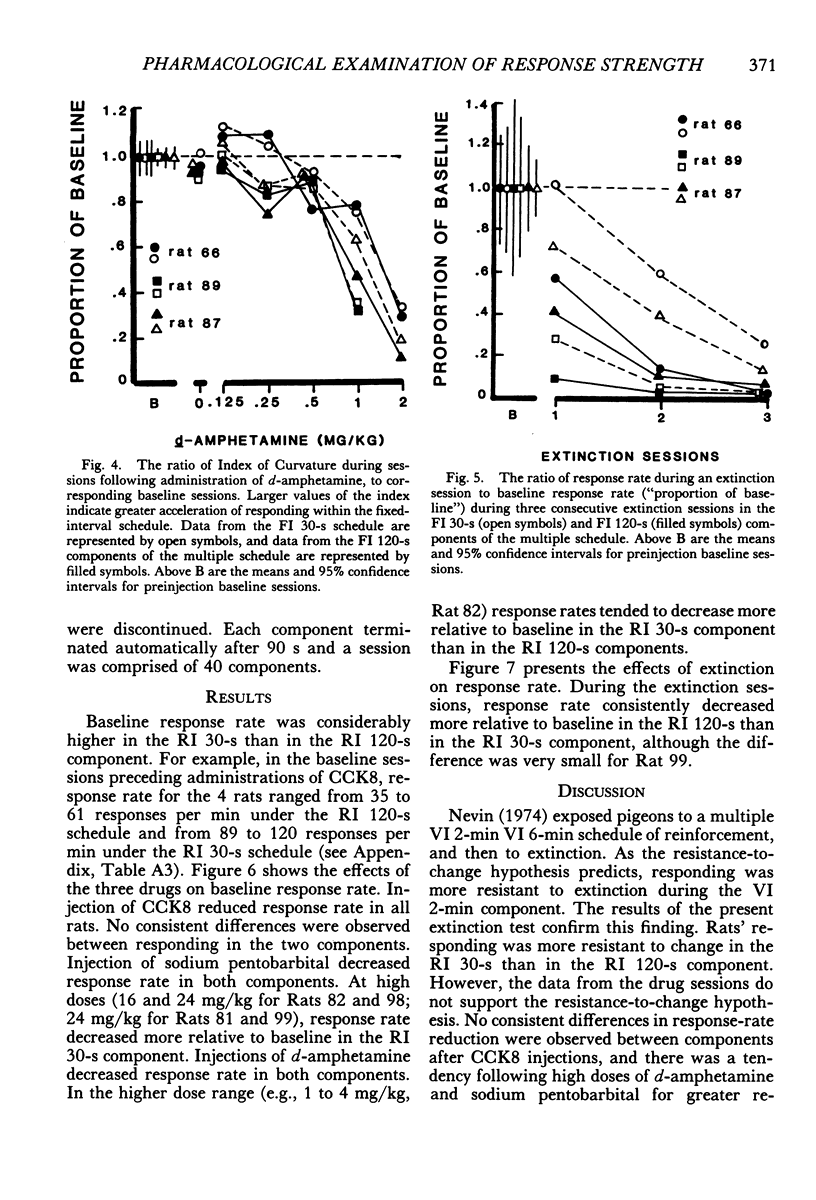
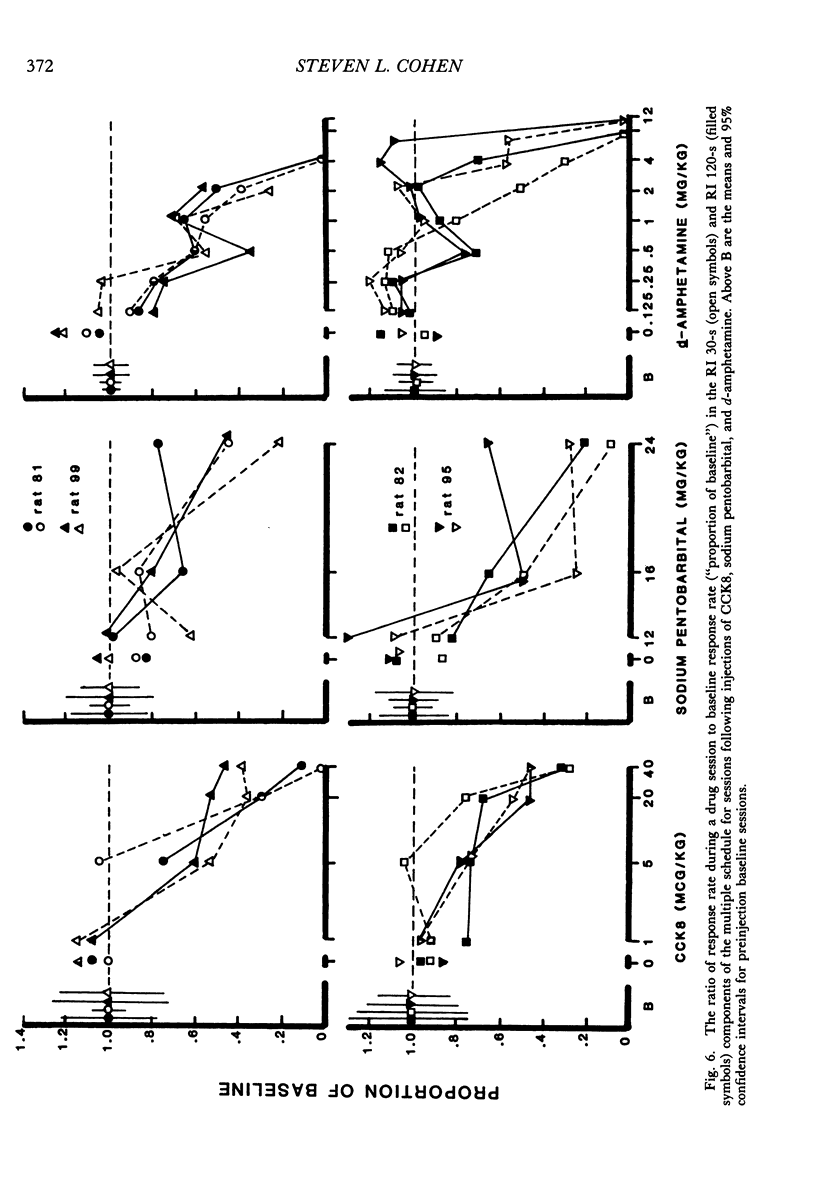
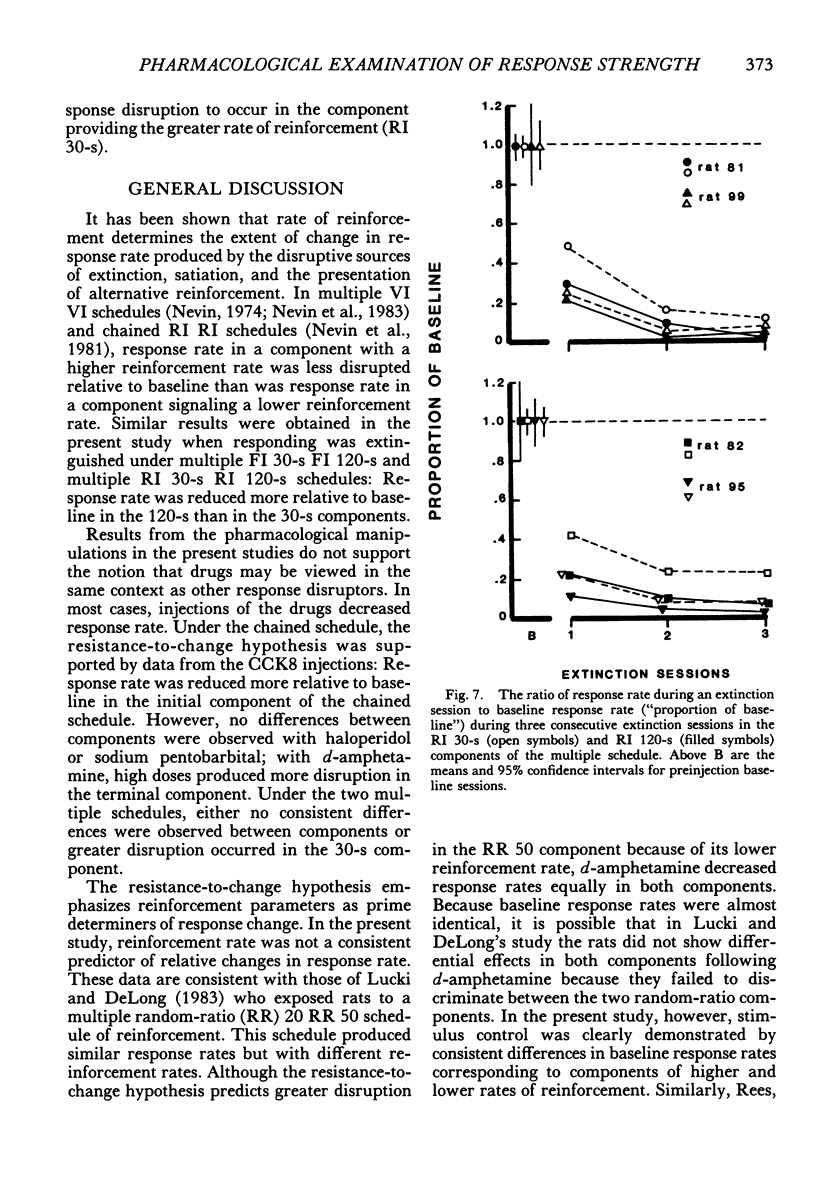
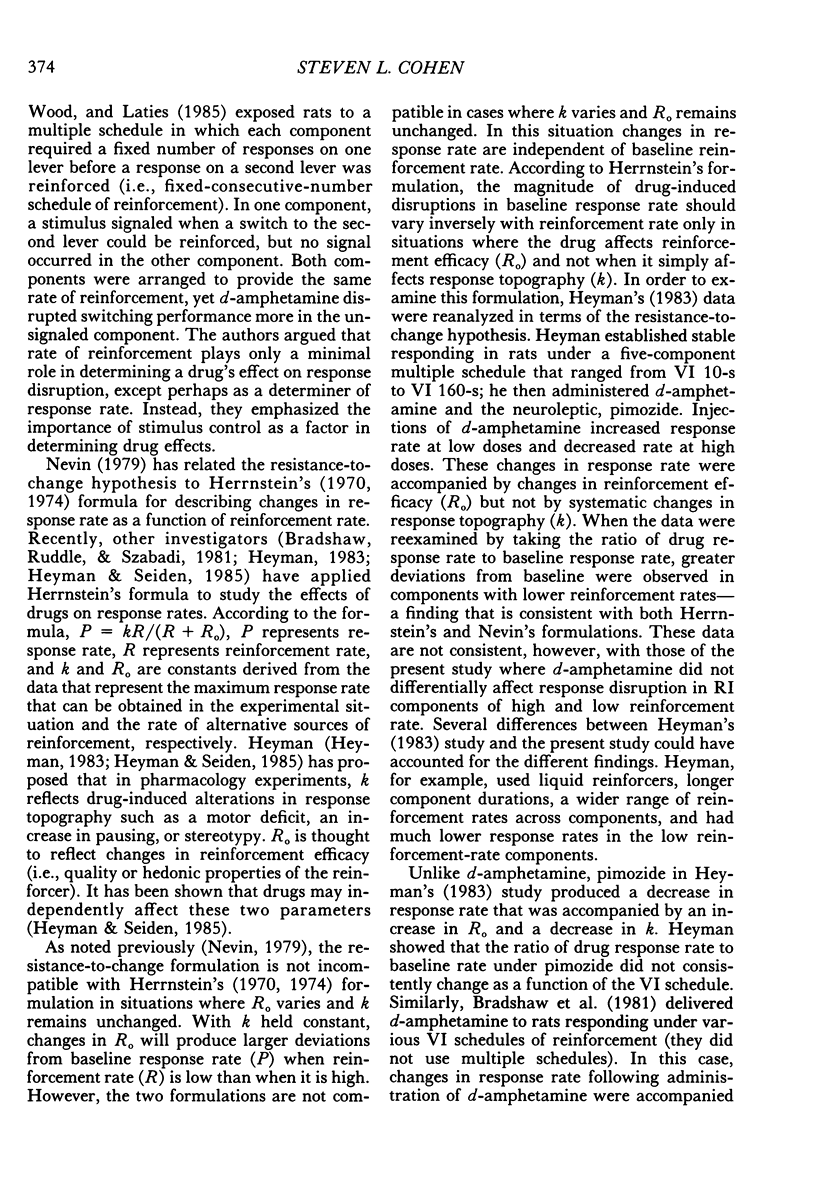
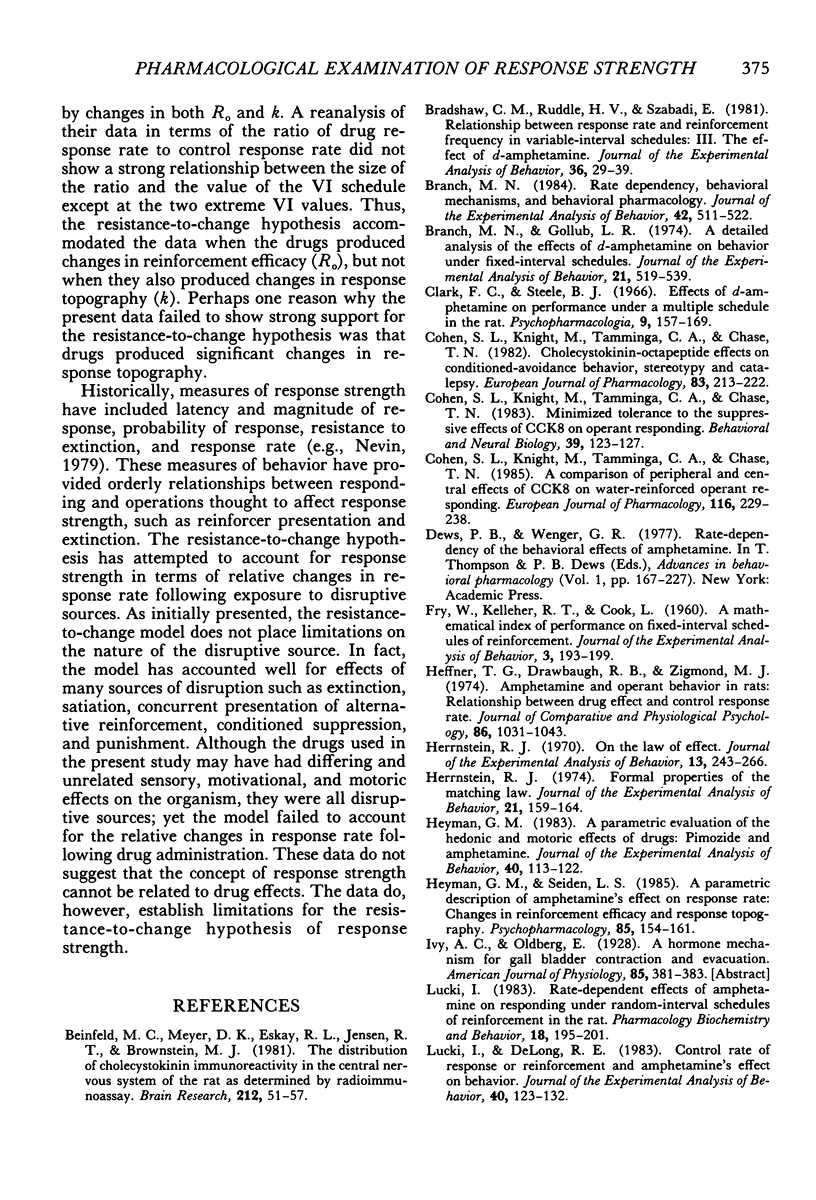
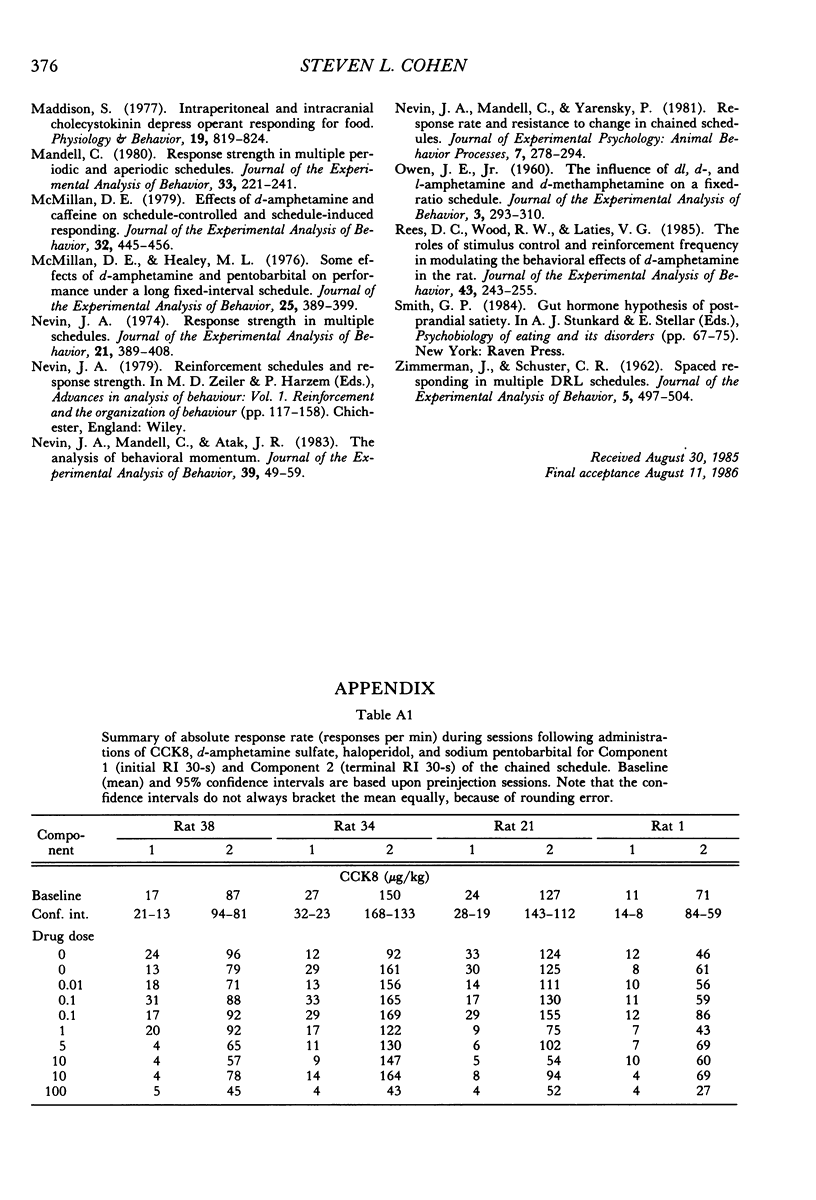
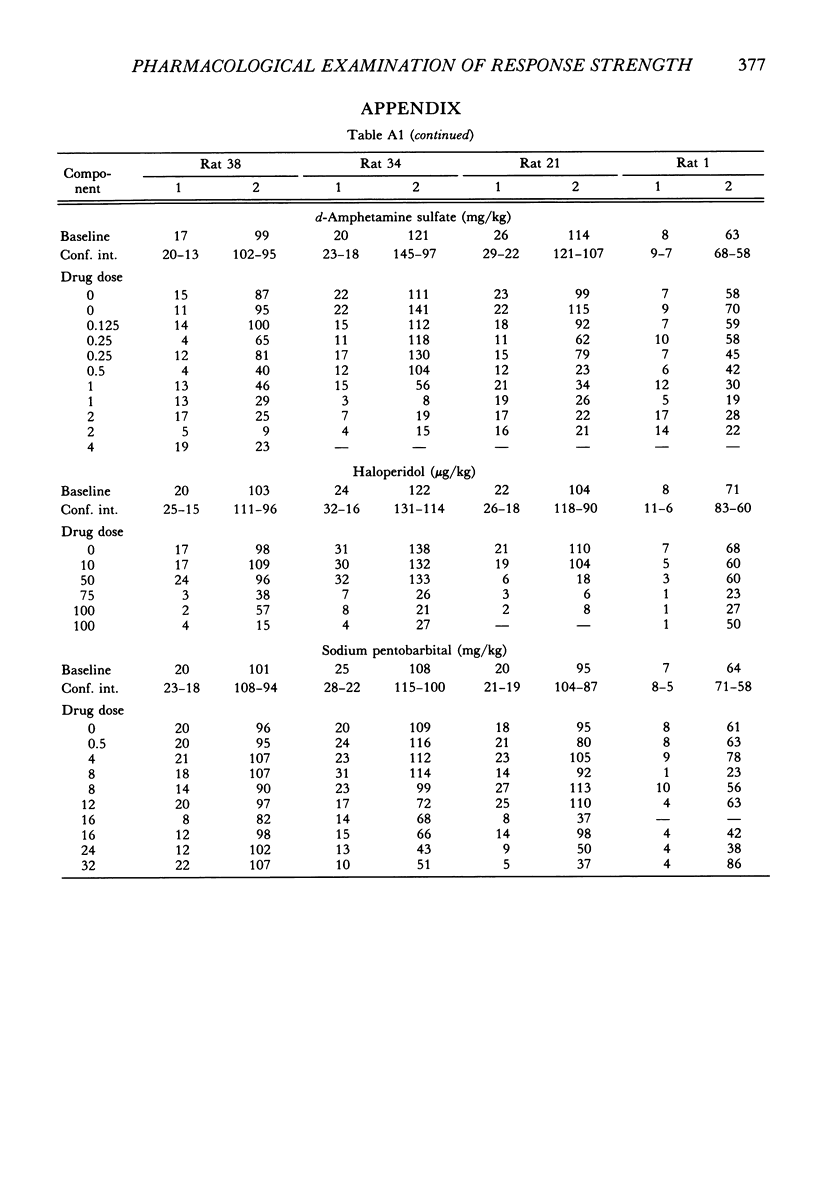
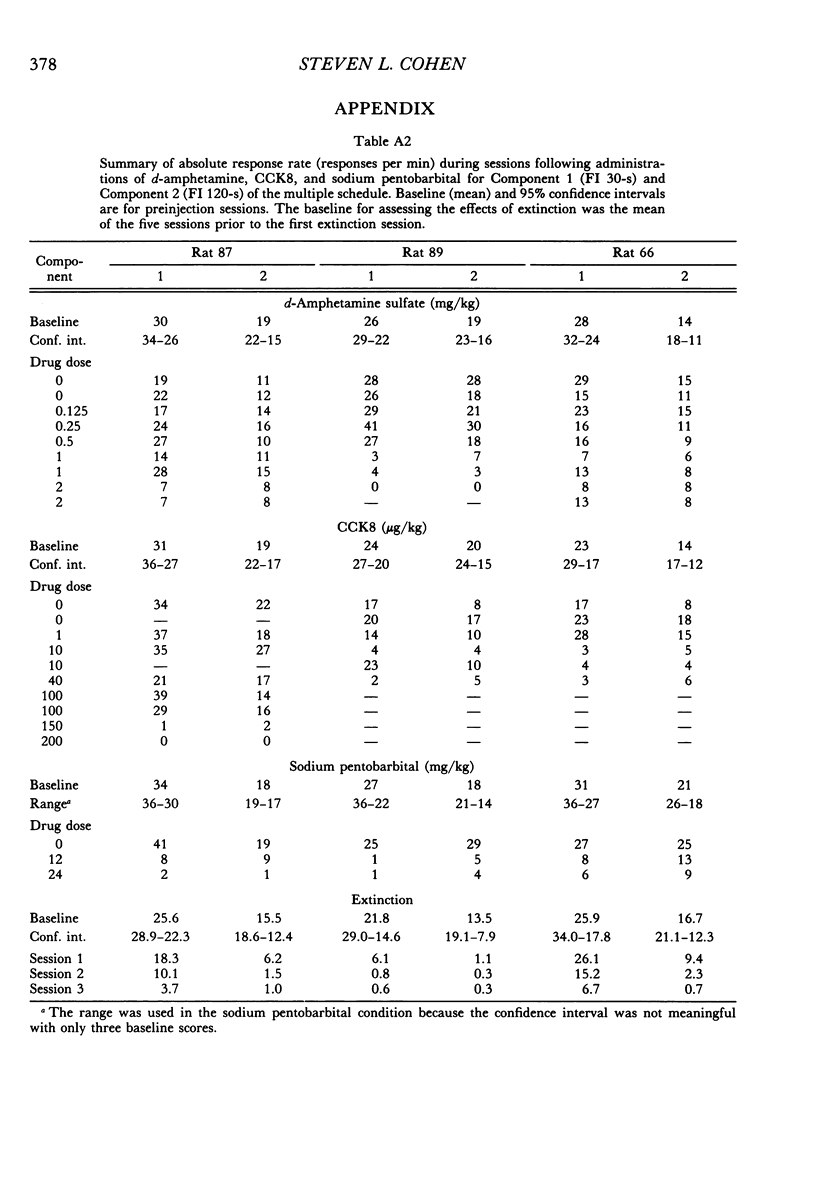
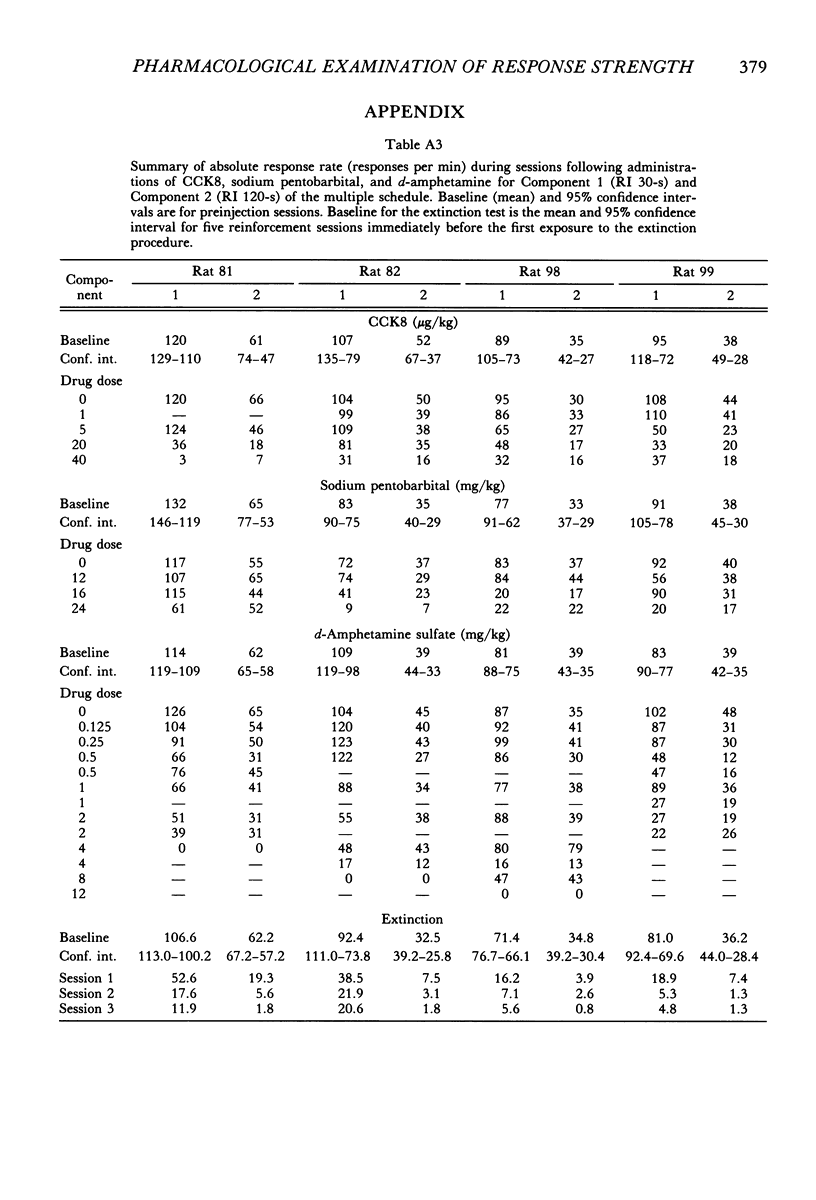
Selected References
These references are in PubMed. This may not be the complete list of references from this article.
- Beinfeld M. C., Meyer D. K., Eskay R. L., Jensen R. T., Brownstein M. J. The distribution of cholecystokinin immunoreactivity in the central nervous system of the rat as determined by radioimmunoassay. Brain Res. 1981 May 11;212(1):51–57. doi: 10.1016/0006-8993(81)90031-7. [DOI] [PubMed] [Google Scholar]
- Bradshaw C. M., Ruddle H. V., Szabadi E. Relationship between response rate and reinforcement frequency in variable-interval schedules: III. The effect of d-amphetamine. J Exp Anal Behav. 1981 Jul;36(1):29–39. doi: 10.1901/jeab.1981.36-29. [DOI] [PMC free article] [PubMed] [Google Scholar]
- Branch M. N., Gollub L. R. A detailed analysis of the effects of d-amphetamine on behavior under fixed-interval schedules. J Exp Anal Behav. 1974 May;21(3):519–539. doi: 10.1901/jeab.1974.21-519. [DOI] [PMC free article] [PubMed] [Google Scholar]
- Branch M. N. Rate dependency, behavioral mechanisms, and behavioral pharmacology. J Exp Anal Behav. 1984 Nov;42(3):511–522. doi: 10.1901/jeab.1984.42-511. [DOI] [PMC free article] [PubMed] [Google Scholar]
- Clark F. C., Steele B. J. Effects of D-amphetamine on performance under a multiple schedule in the rat. Psychopharmacologia. 1966;9(2):157–169. doi: 10.1007/BF00404720. [DOI] [PubMed] [Google Scholar]
- Cohen S. L., Knight M., Tamminga C. A., Chase T. N. A comparison of peripheral and central effects of CCK8 on water-reinforced operant responding. Eur J Pharmacol. 1985 Oct 22;116(3):229–238. doi: 10.1016/0014-2999(85)90157-8. [DOI] [PubMed] [Google Scholar]
- Cohen S. L., Knight M., Tamminga C. A., Chase T. N. Cholecystokinin-octapeptide effects on conditioned-avoidance behavior, stereotypy and catalepsy. Eur J Pharmacol. 1982 Sep 24;83(3-4):213–222. doi: 10.1016/0014-2999(82)90254-0. [DOI] [PubMed] [Google Scholar]
- Cohen S. L., Knight M., Tamminga C. A., Chase T. N. Minimized tolerance to the suppressive effects of CCK8 on operant responding. Behav Neural Biol. 1983 Sep;39(1):123–127. doi: 10.1016/s0163-1047(83)90705-7. [DOI] [PubMed] [Google Scholar]
- FRY W., KELLEHER R. T., COOK L. A mathematical index of performance on fixed-interval schedules of reinforcement. J Exp Anal Behav. 1960 Jul;3:193–199. doi: 10.1901/jeab.1960.3-193. [DOI] [PMC free article] [PubMed] [Google Scholar]
- Heffner T. G., Drawbaugh R. B., Zigmond M. J. Amphetamine and operant behavior in rats: relationship between drug effect and control response rate. J Comp Physiol Psychol. 1974 Jun;86(6):1031–1043. doi: 10.1037/h0037634. [DOI] [PubMed] [Google Scholar]
- Herrnstein R. J. Formal properties of the matching law. J Exp Anal Behav. 1974 Jan;21(1):159–164. doi: 10.1901/jeab.1974.21-159. [DOI] [PMC free article] [PubMed] [Google Scholar]
- Herrnstein R. J. On the law of effect. J Exp Anal Behav. 1970 Mar;13(2):243–266. doi: 10.1901/jeab.1970.13-243. [DOI] [PMC free article] [PubMed] [Google Scholar]
- Heyman G. M. A parametric evaluation of the hedonic and motoric effects of drugs: pimozide and amphetamine. J Exp Anal Behav. 1983 Sep;40(2):113–122. doi: 10.1901/jeab.1983.40-113. [DOI] [PMC free article] [PubMed] [Google Scholar]
- Heyman G. M., Seiden L. S. A parametric description of amphetamine's effect on response rate: changes in reinforcement efficacy and response topography. Psychopharmacology (Berl) 1985;85(2):154–161. doi: 10.1007/BF00428406. [DOI] [PubMed] [Google Scholar]
- Lucki I., DeLong R. E. Control rate of response or reinforcement and amphetamine's effect on behavior. J Exp Anal Behav. 1983 Sep;40(2):123–132. doi: 10.1901/jeab.1983.40-123. [DOI] [PMC free article] [PubMed] [Google Scholar]
- Lucki I. Rate-dependent effects of amphetamine on responding under random-interval schedules of reinforcement in the rat. Pharmacol Biochem Behav. 1983 Feb;18(2):195–201. doi: 10.1016/0091-3057(83)90363-5. [DOI] [PubMed] [Google Scholar]
- Maddison S. Intraperitoneal and intracranial cholecystokinin depress operant responding for food. Physiol Behav. 1977 Dec;19(6):819–824. doi: 10.1016/0031-9384(77)90322-5. [DOI] [PubMed] [Google Scholar]
- Mandell C. Response strength in multiple periodic and aperiodic schedules. J Exp Anal Behav. 1980 Mar;33(2):221–241. doi: 10.1901/jeab.1980.33-221. [DOI] [PMC free article] [PubMed] [Google Scholar]
- McMillan D. E. Effects of d-amphetamine and caffeine on schedule-controlled and schedule-induced responding. J Exp Anal Behav. 1979 Nov;32(3):445–456. doi: 10.1901/jeab.1979.32-445. [DOI] [PMC free article] [PubMed] [Google Scholar]
- McMillan D. E., Healey M. L. Some effects of delta-amphetamine and pentobarbital on performance under a long fixed-interval schedule. J Exp Anal Behav. 1976 May;25(3):389–399. doi: 10.1901/jeab.1976.25-389. [DOI] [PMC free article] [PubMed] [Google Scholar]
- Nevin J. A., Mandell C., Atak J. R. The analysis of behavioral momentum. J Exp Anal Behav. 1983 Jan;39(1):49–59. doi: 10.1901/jeab.1983.39-49. [DOI] [PMC free article] [PubMed] [Google Scholar]
- Nevin J. A. Response strength in multiple schedules. J Exp Anal Behav. 1974 May;21(3):389–408. doi: 10.1901/jeab.1974.21-389. [DOI] [PMC free article] [PubMed] [Google Scholar]
- OWEN J. E., Jr The influence of dl-, d-, and l-amphetamine and d-methamphetamine on a fixed-ratio schedule. J Exp Anal Behav. 1960 Oct;3:293–310. doi: 10.1901/jeab.1960.3-293. [DOI] [PMC free article] [PubMed] [Google Scholar]
- Rees D. C., Wood R. W., Laties V. G. The roles of stimulus control and reinforcement frequency in modulating the behavioral effects of d-amphetamine in the rat. J Exp Anal Behav. 1985 Mar;43(2):243–255. doi: 10.1901/jeab.1985.43-243. [DOI] [PMC free article] [PubMed] [Google Scholar]
- ZIMMERMAN J., SCHUSTER C. R. Spaced responding in multiple DRL schedules. J Exp Anal Behav. 1962 Oct;5:497–504. doi: 10.1901/jeab.1962.5-497. [DOI] [PMC free article] [PubMed] [Google Scholar]


